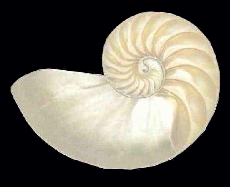 Shell of Nautilus pompilius sliced across to show inner chambers. Image from Sanibel Seashell Industries, used with permission. |
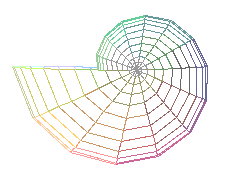
A mathematical model of Nautilus. |
|
Fossil of the Ammonite Astroceras obtusum. Image from Paleoplace.com, used with permission. This specimen, measuring approx. 4 inches in diameter, is from the lower Lias formation in Dorset, England. It is about 200 million years old. |
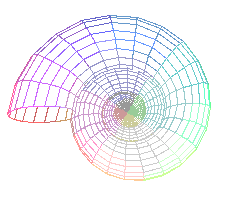 A mathematical model of Astroceras. Model details.
|
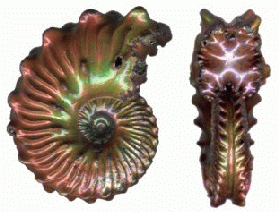 Fossil Ammonite Euhoplites truncatus. Image @2000 Jim Craig from Fossils of the Gault Clay and Folkestone Beds of Kent, UK, used with permission. | 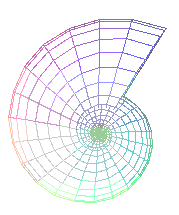 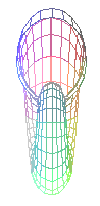 A mathematical model of Euhoplites. Model details. |
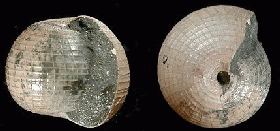 Fossil Bellerophina minuta. Long thought to be a cephalopod, recently reclassified in the Gastropoda. Image @2000 Jim Craig from Fossils of the Gault Clay and Folkestone Beds of Kent, UK, used with permission. | 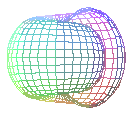 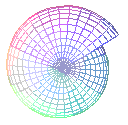 A mathematical model of Bellerophina. Model details. |
